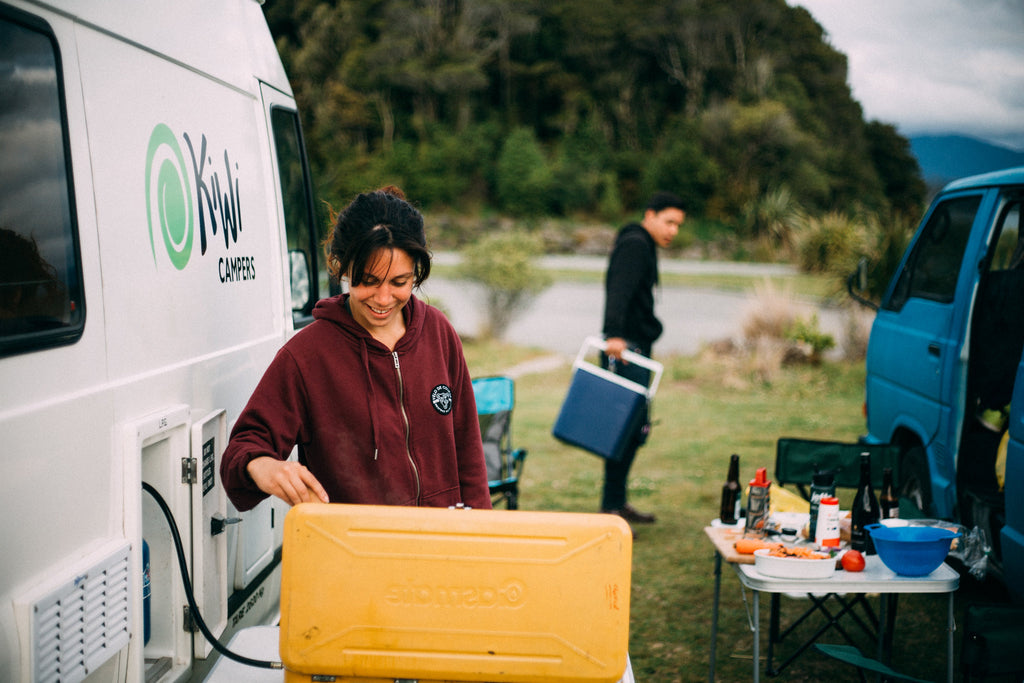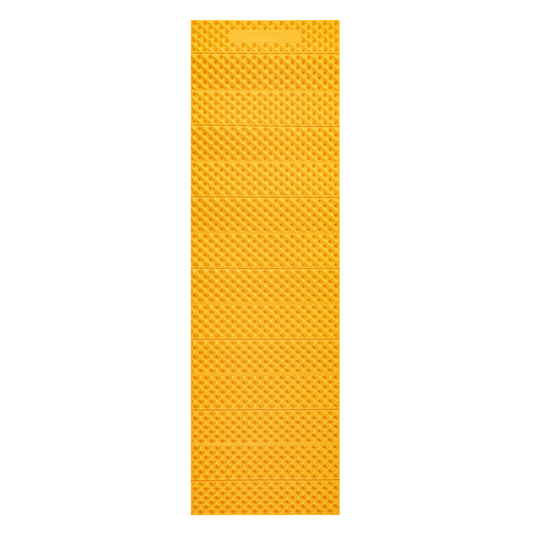
(Source: Ezra Paulekas)
No matter where you camp, animals of various types can get into your food. If there are crumbs or snacks inside a tent or backpack, mice and other rodents, as well as bears, may gnaw straight through it.
It is our responsibility as campers to guarantee that wild animals do not access human food. This disrupts their natural nutrition, makes them dependent on others, and puts them in danger. Bears that have become acquainted with humans and have become a nuisance may be killed.
In addition to preventing conflicts with animals, correct food handling practices are essential for your health and enjoyment of your outdoor journey. Follow the rules below if you want to spend your time on the path rather than the latrine.
Food Storage Tips

(Source: daveynin)
In both a campground and a backcountry campsite, keeping human food (and other scented goods such as hygiene) away from animals necessitates similar techniques. Here are a few general pointers:
- Food, trash, or other fragrant items should never be left inside your tent.
- Always keep an eye on your meal. Food is easily snatched by jays, squirrels, and chipmunks in broad daylight, while other species come foraging at night.
In the Campground
-
Keep all of your food in your cooler or car during the day, even if you're just sitting nearby or going to the outhouse, and especially if you're going on a trek.
-
During the night, store any loose food, as well as a cooler if you have one, in a metal bear box. Food storage inside a car is also an option in some areas, but you should check with local property managers first, as some areas (particularly those where bears have become capable of breaking into vehicles) prohibit the practice. Raccoons and bears may open coolers left out in the open. Some cooler makers claim that certain models are bear-proof; however, padlocks may be necessary. If bears pose a problem in the campground, hang a bag of food from a high tree branch or, as a last resort, use a bear canister.
In the Backcountry
Pay heed to the regulations and food storage rules if you'll be in a bear-inhabited area of a national park, national forest, or scenic trail like the Appalachian or Pacific Crest Trail.
If you're backpacking in an area with no defined rules, you have three options:
Use a metal locker: Some campgrounds will have some available. Because these are occasionally communal, there's no guarantee that there'll be enough room for your belongings. It's also crucial to properly secure the latch so that bears can't get in. You can bet they will if they don't.
Use a bear canister: These are hard shell plastic containers with a screw on-and-off lid(some bear canisters will come with a lock that requires a coin or screwdriver)They're intended to fit into most backpacks and come in a variety of sizes, so you can pick one that's smaller if you're traveling alone. Have a canister with you if you're backpacking in a location where they're required. You could face a big fine if a ranger stops you on the trail and you don't have one. Bear canisters are loaned or rented by rangers in various national parks. However, on busy summer weekends, they may run out of canisters before you arrive, so plan accordingly.
A bear sack is a fantastic choice if a bear canister isn't required but you still need to keep your food safe from bears. These are made of high-density polyethylene that a bear can't rip open. Aluminum liners are also available separately so that your food does not get crushed by bears.
Separately available odor-proof plastic bags (that are also waterproof, unlike the bear bag itself) can be used to place your food and waste in first to further dissuade bears. Some bag models are designed for deterring smaller rodents like marmots, squirrels, or mice; however, if you reside in bear country, consider a bear-specific bag that has passed the Interagency Grizzly Bear Committee's test (IGBC).

(Source: Yellowstone National Park)
Hang your food on a tree or pole: This may not be the most efficient, but it can save you some weight from carrying a canister, all you need is some rope and a sturdy bag. Some backcountry campgrounds may have bear poles for which you can hang your food and backpack, a much better alternative than a tree limb.
To hang your food over the tree limb or cable, connect a 50- to 100-foot rope to a weight (use a hand-size boulder or fill your tent-stake bag with local rocks). It may take several attempts to get it properly. Once you're back on the ground, untie the rock or tent-stake bag and connect your food bag. Make sure your bag is at least four feet away from the trunk or pole, then hoist it 10 to 15 feet high so a standing bear can't reach it. To secure the rope, tie the other end to a tree trunk or pole.
Food Handling Basics

(Source: Ezra Paulekas)
There are three common ways to get sick when camping due to inadequate hygiene and food handling:
- Infections spread to your hands and mouth after using the restroom (fecal-oral transmission)
- Consuming spoiled food from a cooler
- Improper handling of raw meat
- After using the restroom, properly wash your hands with soap and warm water (away from camp and away from a fresh-water source).
- Dry your hands with a towel that hasn't been used to dry dishes.
- Use hand sanitizer or sanitizing wipes if you can’t wash your hands
- Make sure your hands are washed and sanitized before handling or eating food
How to protect food from going bad in the cooler: If you’re bringing a cooler, chances are you’ll be car camping. Perishables such as meat (particularly fresh), cheese, eggs, and milk should be kept at 40 degrees Fahrenheit or colder to avoid spoilage.
- Before you put any food in the cooler, chill it for an hour using ice or ice blocks.
- Fill large polycarbonate water bottles with water, juice, or milk and freeze them (leave room at the top of the bottle for expansion). These keep your cooler cold longer than fast-melting ice cubes, and beverages can be consumed when melted.
- Double-package your raw meat to ensure that it does not leak. Frozen meat should be at the bottom of the cooler where it is the coldest.
- Place food that will be consumed first at the top of the cooler
- Use a thermometer to check the temperature of the cooler so that you know if it’s time to put more ice or if any food may be at risk of spoiling.
Handling raw meat at camp: Cutting up your raw meat into bite-size pieces at home and placing it in a zip-top bag is a good idea. You'll have less laundry to do in camp this way.
- Handle raw meat with extreme caution, just as you would at home. After cutting raw meat in camp, immediately transfer the meat pieces into your cookware and wash the cutting board, knife, and your hands with soap and hot water (if possible) before touching anything else.
- Any plastic wrap from your raw meat should be double-bagged and stored in your cooler or garbage bag until you get home, or disposed of in a campsite trash bin.
- Do not cut any veggies or cheese onto surfaces with raw meat residue
More tips for food handling:
- Keep odors at bay: Cook and wash dishes away from your tent so odors will not attract animals near where you sleep.
- Dishwater: Dispose of any food scraps into the trash and dishwater over a rocky area away from camp.



